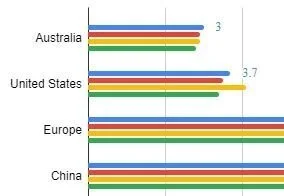Will an Australian patent be opposed? AI can predict this with an accuracy of 76%
What is a patent opposition, and why does matter
After a patent is accepted by the patent office, interested parties have a three-month window to file an opposition to this grant - in other words, they can make a submission to the patent office that the patent should not be granted, and supply a list of legal reasons why not. This in turn leads to a series of documents being submitted to the patent office by the opposing party, and the applicant. This is generally followed by a hearing, in which a senior examiner makes a decision to either accept the patent, refuse the patent, or amend the accepted claims (sometimes the party agree to a negotiated settlement prior to this). Regardless of the outcome, either party can also appeal the outcome to the Federal Court.
So why might opposed patents be interesting?
There are two reasons
Additional costs - Such patents created additional costs for patent owners, and complications for patent attorneys.
A potential suggestion of valuable patents - For a patent to be opposed, this requires both parties to be willing to invest can be substantial amounts of money in pursuing their objectives. In other words, at least two fully independent parties think the patent is valuable (or would block a valuable commercial opportunity).
For this reason, opposed patents are likely to be valuable patents, and so being able to predict which patents are likely to be opposed can double as a prediction of the more valuable patents.
Can we predict patents that will be opposed from bibliographical details?
Since it would be very useful if we could make such predictions, I investigated to see if this was possible from available bibliographical data.
I used Patseer to search for Australian patents that were opposed, and found 1287 such patents that were published between 2011 and 2021:
The most common technical areas for the opposed patents was civil engineering, followed by Pharmaceuticals and Biotechnology:
The most opposed companies were Esco (mining technology, Nestle and De La Rue (which supplies banknotes):
Building a AI prediction model
In order to create a prediction model, I took the above dataset of 1282 opposed Australian patents in Patseer, and then added to this dataset a list of 1487 ‘randomly selected’ Australian patents of a very similar age profile that we not opposed (I did this by adding and subtracting 10 from each of the numbers for the opposed patents - not all of these new patent numbers were actual patents, and this led to a set of 1487 not opposed patents). This led to a final dataset of 2437 patents.
I extracted bibliographical data for these patents from Patseer, and also Ambercite citation data.
I then applied a range of machine learning (i.e. artificial intelligence, or AI) models to this data, with the outcome being a predicted likelihood of opposition. The final model had an accuracy score of 76%.
So what does an accuracy of 76% mean in practice?
This can be explained by the figure below. This shows the range of predicted probabilities on the X-axis, grouped into a series of ‘buckets’ (0 to 5% probability, 5 to 10% probability, etc), while the Y-axis shows for each of these buckets how many of the patents in each bucket were actually opposed - or not.
Looking at this in more detail:
The orange bars show the patents that were not opposed in reality. If we look at the left hand bar (which is zero to 5% predicted probability), we can see that vast majority of these patents (85 out of 93) were not opposed.
The blue bars shows the patents that we opposed in reality. We can see that all of these patents with a predicted probability of opposition of 95% or more were opposed - and even we stretch the query to look at the patents with a predicted probability of opposition of 80% or more (the four bars to the right), 366 out of 399 of these patents were opposed.
So the prediction of opposition appears to be working well.
Some examples of prediction scores
The utility of these prediction scores might be easier to understand if we consider some examples.
The patent in the database with the highest predicted probability of being opposed (96%) was AU2012203568, filed by Nestle for an Oligosaccharide mixture. This patent was opposed by Fonterra, which led to the patent being amended before it was granted.
The patent in the database with the second-highest predicted probability of being opposed (95%) was AU2012222102, filed by United States Gypsum Company for Lightweight, reduced density fire rated gypsum panels. This patent was opposed by CSR Building Products, which led to the patent being refused after the opposition process.
The patent in the database with the third-highest predicted probability of being opposed (94%) was AU2008202479, filed by GlaxoSmithKline for Neisserial vaccine compositions comprising a combination of antigen. This patent was opposed by Novartis, which led to the patent which led to the patent being amended before it was granted.
The patent in the dataset with the lowest probability of being opposed (2%) was AU2012201492, filed by a Mr Meyerhoff for a Finishing Margin Trowel. This patent was not opposed.
What can we do with this model?
This machine learning can predict, with reasonable accuracy of 76%, whether or not an Australian patent will be opposed. We can now use this model to make predictions from other patents, again using a combination of Patseer and Ambercite data. The outcome will be a percentile likelihood of opposition.
I expect that these predictions will be helpful to patent attorneys, patent owners and patent insurers. If you think these predictions will be helpful to you, please contact me and I would be happy to provide litigation prediction scores for patents that you nominate.







